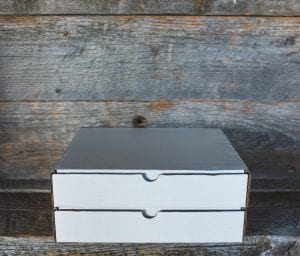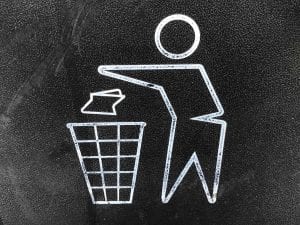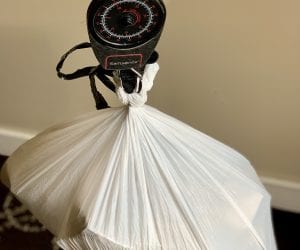Our large and increasing human population generates an incredible amount of waste that greatly impacts the environment and public health around the world. Recycling can make a big difference for our planet, but recycling correctly can be confusing and difficult. There are a host of myths, misconceptions and mysteries surrounding recycling, and what we can and cannot recycle.
Personally I can’t resist bustin’ a few myths, especially when it helps the planet. So below, I’ve explored six recycling issues that are particularly important and/or misleading. I hope it helps!
1. Pizza boxes are not recyclable (entirely)

Pizza is a wonderful thing, but it can be a bit greasy. That grease can’t be separated from the paper fibers in the box, which ruins the process of recycling
cardboard. The same goes for other used paper products like napkins, plates, cups, and towels. In fact greasy, oily, or stained paper products can contaminate a whole batch of otherwise perfectly reusable paper products. So if you want to recycle your pizza box, first cut out the spoiled sections and then go ahead and recycle the clean cardboard.
2. Bottle caps: separate or keep together? The mystery continues…
Should we take off the caps of plastic bottles, or leave bottle and cap together when we recycle them? Alack and alas, some recycling riddles have no easy explanation. The caps and bottles are made of different plastics (usually #5 and #2 respectively) that melt at different temperatures. So depending on the processing facilities, some recyclers want you to keep bottle and cap together (e.g. Philadelphia, PA), and others want them separated (e.g. Fort Worth, TX). The best thing to do is call your curbside haulers and get the scoop.
3. Pay attention to a plastic’s number
Just because a plastic has a number inscribed by the recycling symbol, doesn’t mean it’s recyclable. The numbers tell us which resins the plastics contain, and their recyclability depends on where you live. Generally plastics #1 and #2 are acceptable for curbside pick-up, and #3 – #7 are not. Call your recycling service or search for your area at Earth911.com to find out local policies. Also, check out your local supermarket, office supplies dealer, or hardware store: they often allow you to recycle some higher-numbered plastics. If a plastic is unnumbered, it could be recyclable but probably isn’t. Both unaccepted and unnumbered plastics could contaminate a whole stream of recyclable plastics if you throw them in with the rest, so it’s best to find another use for these objects. For a more thorough explanation of the numbers, check out the PBS Smart Plastics Guide.
4. Wash out your plastics and glasses well, not perfectly
It’s always a good idea to rinse plastic and glass before recycling, even if your recycling center doesn’t require it. This will keep mold, insects and scavenging animals away from materials during transport and awaiting processing. Unless you’re planning on reusing it, you don’t need to clean recyclables completely. Unlike pizza boxes and paper, grease and oils usually don’t interfere with the recycling process for plastic and glass, but enough food remains or liquids included with your recyclables could contaminate the stream so it’s best to be safe and wash out what you can.
5. Old electronics don’t belong with other recyclables
In this Digital Age, we end up with a lot of old, broken, or unusable electronics that can be quite an environmental hazard when they end up in landfills. But even though many electronics seem to be made of mostly recyclable materials like plastics and metals, technology doesn’t belong with the normal recycling. Electronics and their components (including batteries) must go through special processes to make them reusable. Many electronics retailers like BestBuy, Staples, Samsung, Sony, and LG have in-store bins for you to recycle electronics. It’s always good to check with schools, businesses and nonprofits in your area to see if they could make use of your old tech.
6. Recycling is not the best way to reduce waste

You’ve probably heard of the “three R’s” of avoiding waste before: reduce, reuse, and recycle. Cutting down on the waste we generate starts before we want to recycle, so it’s no coincidence that it’s the last of the three. Reduce your personal consumption of products that create a lot of waste, like things with lots of packaging or unrecyclable materials. Utilize more long-lasting and reusable items in your everyday life: clean with cloth rags instead of paper towels, bring your own bags for groceries, and drink out of a reusable bottle rather than a disposable one.
Image credits: Pizza boxes by Kenny Eliason on Unsplash; Recycling bin on chalkboard by Gary Chan on Unsplash




